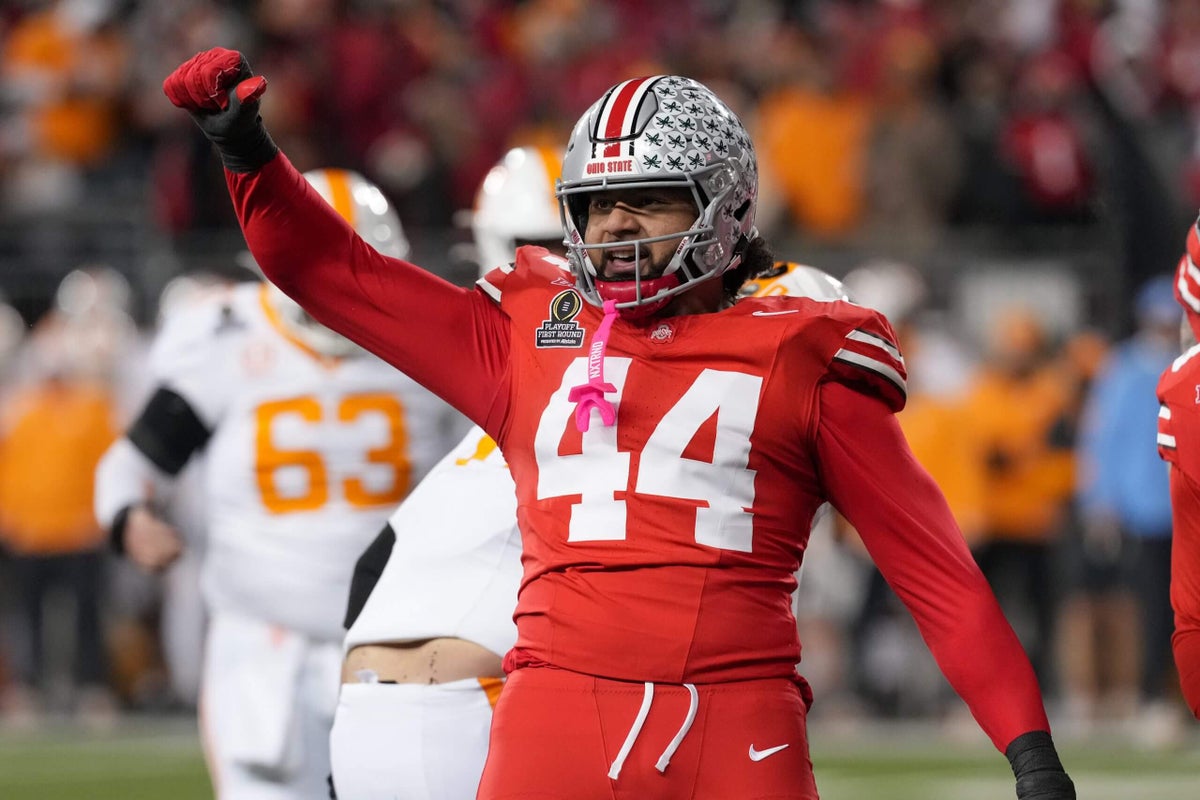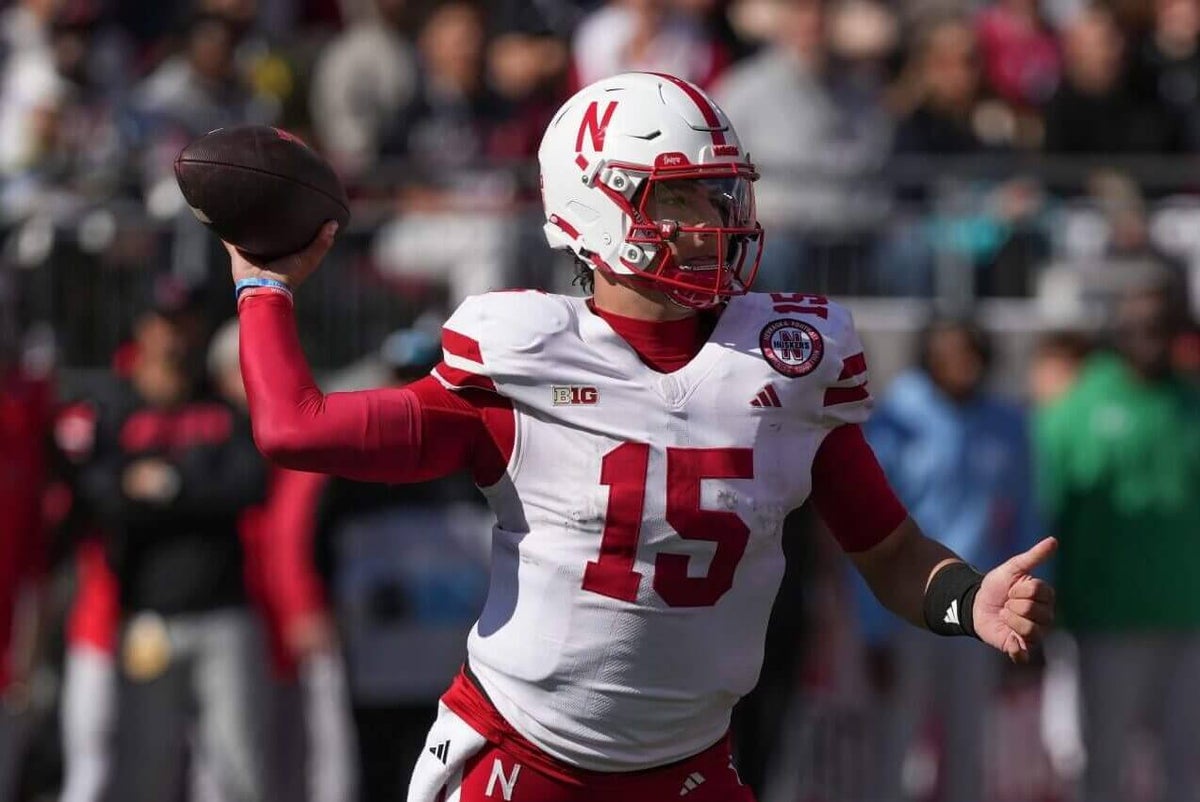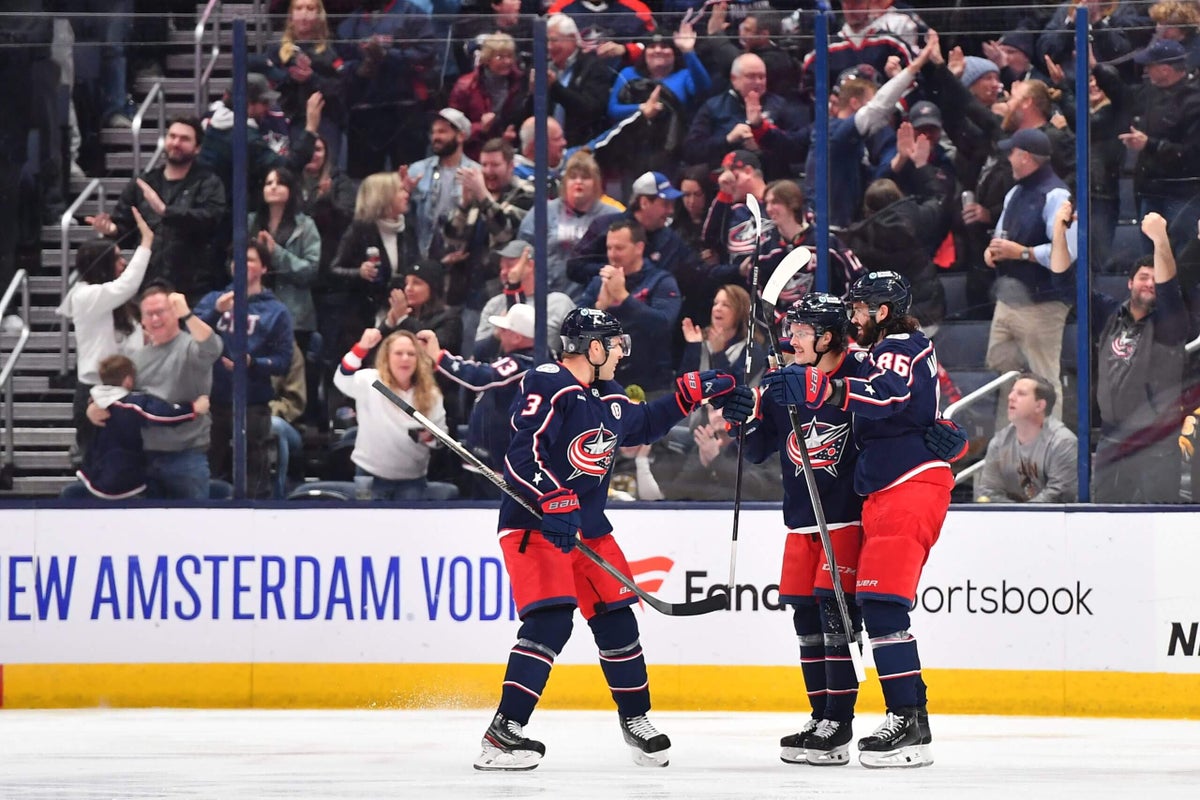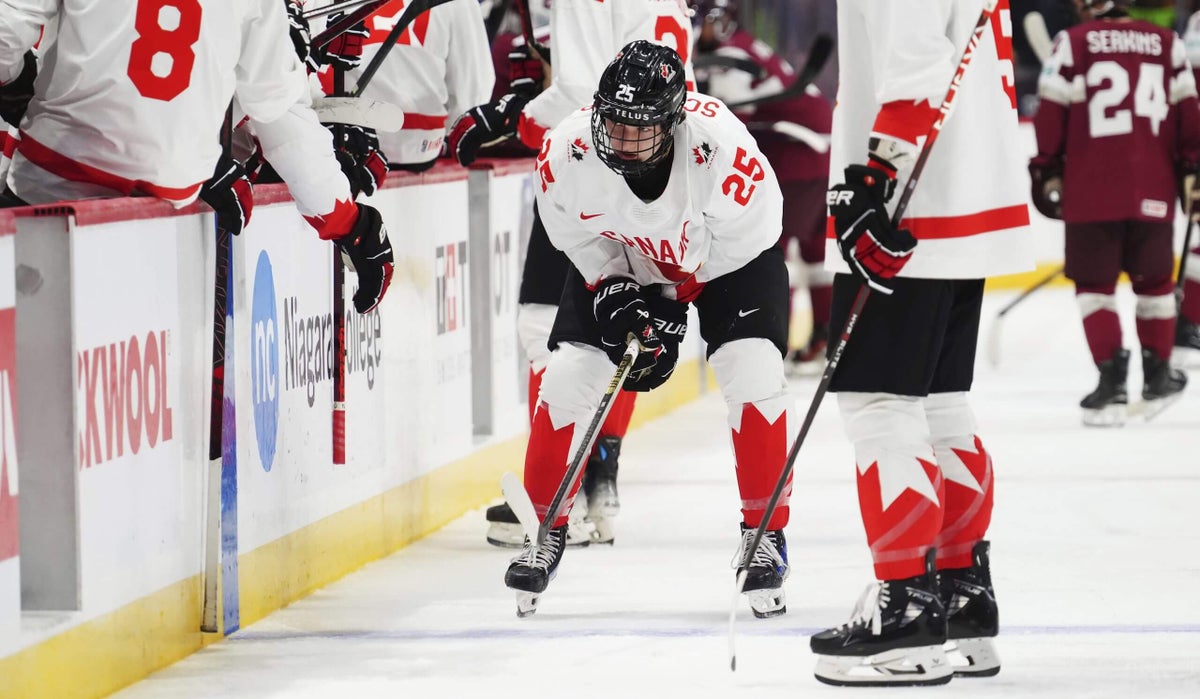Ohio State’s defense has been one of the best in the country most of the season, but there are reasons to believe it’s peaking at the right time.
The Buckeyes lead the FBS in scoring defense, total defense and pass defense and rank eighth in rushing defense. They’ve also given up more than two touchdowns just once this season: the 32-31 loss at Oregon on Oct. 12.
Now, Ohio State has a chance to redeem itself in a rematch against Oregon in Wednesday’s College Football Playoff quarterfinal at the Rose Bowl after giving up 496 total yards to the Ducks two months ago.
A lot has changed over the past two months, especially from a schematic perspective. In the past seven games, Ohio State has allowed an average of just 11.7 points, giving the Buckeyes confidence that they can build on that in the Rose Bowl against the Ducks’ high-powered offense that’s led by coordinator Will Stein and Heisman finalist quarterback Dillon Gabriel.

GO DEEPER
The play caller behind Oregon and Dillon Gabriel’s CFP run to the Rose Bowl
If Ohio State is going to take down the No. 1 seed in the Playoff, the defense has to be at its best to make up for its worst performance of the season.
Here are three reasons to believe it can do just that:
1. Pass rush has been elite
A lot of the Ducks’ success in their win against Ohio State in October came in the first half, when they 285 yards and 22 points.
There were plenty of reasons why Oregon moved the ball so well, but a big part of it was the time that Gabriel had in the pocket. Gabriel threw for 212 yards in that half. Though Ohio State finished with a solid 36.1 percent pressure rate, per TruMedia, it was one of only two games this season it didn’t record a sack. And when Gabriel wasn’t pressured, he picked apart the Buckeyes by completing 17 of 22 passes for 268 yards and two touchdowns.
Since that game, Ohio State has emphasized finding more ways to get after the quarterback. Through the Oregon game, Ohio State ranked 64th in blitz rate (28.1 percent), according to TruMedia. After, it is 13th (35.8 percent).
Jack Sawyer and JT Tuimoloau have been more consistently productive, aided in part by the added pressure coordinator Jim Knowles is sending from the linebackers and the nickel corner, as well as mixing up the twists and stunts up front. The two All-Big Ten defensive ends put together their best game of the season in the first round of the Playoff against Tennessee, when Tuimoloau finished with eight tackles and two sacks and Sawyer had five tackles and 1.5 sacks.
In the Oregon loss, Ohio State blitzed on just 25 percent of dropbacks, its lowest in Big Ten play this season. Since then, it has had a higher blitz percentage in every game except Tennessee. Ohio State didn’t need to blitz much against the Vols, as it got up 21-0 early and finished with a 43.2 pressure rate.
Ohio State’s defensive line has been playing its best football through November and into the Playoff. It needs another strong game against the Ducks if it wants to move on to the semifinal at the Cotton Bowl, especially given Oregon’s All-Big Ten talent at tackle with Josh Conerly Jr. and Ajani Cornelius.

GO DEEPER
Final thoughts on how Ohio State dominated Tennessee — and what it means for Oregon
2. Ohio State secondary has bent but not broken
Two of Ohio State’s strengths are limiting its opponents’ big plays (fourth in the FBS in explosive play rate allowed) and getting stops in the red zone (first in red zone touchdown percentage).
In the past two seasons under Knowles, Ohio State has given up just three passes of 40 yards or more, the fewest in the country. But both of the 40-plus passes this season came in the loss to Oregon: The Ducks had a 48-yard touchdown and a 69-yard pass that set up another touchdown.
Much of Oregon’s success came against Ohio State’s top corner, Denzel Burke. According to PFF, the Arizona native gave up 162 yards in the game, easily the worst performance of his career. Burke has played closer to his potential recently, giving up a total of 120 yards when targeted in the past seven games.
With Burke rebounding and the pass rush improving, Ohio State is third nationally in explosive play rate allowed since Oct. 12, giving up explosive gains (runs of 12-plus yards, passes of 16-plus yards) on just 8.1 percent of plays.
Knowles said it’s been a mix of better secondary play and an improved mindset.
“You have to apply the mix, and we talk about explosive plays all the time,” Knowles said. “I think when you get burned by some it becomes even more real for you, so there’s just been a continued emphasis on it.”
Ohio State is still known to commit defensive pass interference from time to time and struggles against one-on-one balls along the sideline, but they haven’t led to touchdowns.
Ohio State is giving up just 0.97 points per drive, topping Texas for the best mark in the country. And even when Ohio State is giving up touchdowns, they’ve all been on the ground. The Buckeyes haven’t given up a passing touchdown since Oct. 12, a stretch that includes games against Playoff teams Penn State, Indiana and Tennessee.
Ohio State is the only team in the country without a passing touchdown allowed in that time. In fact, it’s the only team that’s given up fewer than three.

Alabama transfer Caleb Downs has thrived for Ohio State. (Adam Cairns / Imagn Images)
3. Ohio State has found a balance with its safeties
Knowles has been experimenting with some things since the Oregon loss, even if he won’t detail them publicly.
The pass rush changes have been obvious, and there have also been some adjustments in the secondary. Jermaine Mathews Jr. has played more, for instance, enough that Ohio State refers to him as a starter even if he has to come off the bench — much like Cody Simon did last season.
The biggest reason for success against the pass is that Caleb Downs and Lathan Ransom have become the best safety duo in the country. Downs was a unanimous All-American this season, and Ransom was an All-Big Ten player and AP third-team All-American. But additionally, Ohio State has been moving Jordan Hancock around a bit more. Last year, Hancock moved to nickelback in Ohio State’s three-safety defense, which was a good option because Hancock can cover and is physical enough to come up and play in the run game.
This year, he’s mixed in more safety. Against Tennessee, Ohio State moved Hancock back in a deep safety position to allow Downs to get in the box and play as another linebacker while also still having safety coverage responsibilities.
“Whatever they need, if I need to cover somebody, I’ll go cover somebody,” Hancock said. “If they need me to do run support, I’ll go do run support.”
The flexibility has given Knowles more options as a play caller. The No. 1 rule as a defensive play caller is to get your best players around the ball as much as possible, and that’s what he’s been able to do with Downs, knowing the additional talent he has at safety with Ransom and Hancock.
“When you have a guy like Caleb Downs, you don’t want to get him removed from a position to make plays, because he can track the run and play the pass,” Knowles said. “In that set-up, you keep him closer to the action.”
With the three of them on the same page, Ohio State has a trio that can play against the run and also play deep, giving it more chances to disguise coverages.
And in an evenly matched game, any bit of confusion that can be schemed up is a win for the defense.

GO DEEPER
The CFP quarterfinals are set. Here’s a reason to be excited for each matchup
(Top photo of JT Tuimoloau: Jason Mowry / Getty Images)













Leave a Reply